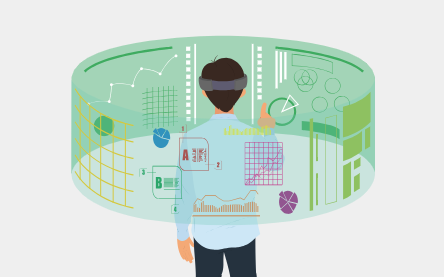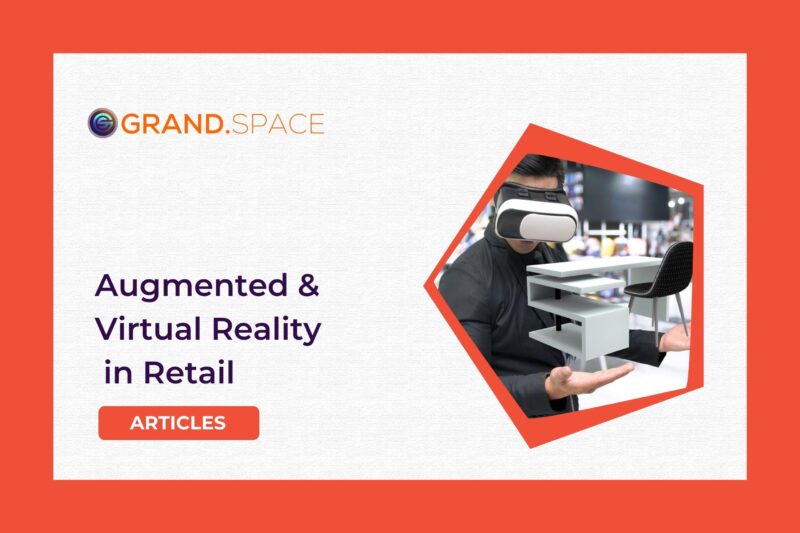No longer limited to shopping online or at a store’s physical site, customers can enter the domains of virtual and augmented reality and immerse themselves in a real-life, real-time shopping experience that combines the best of the physical and digital worlds – in-store or online.
Considering recent forecasts, virtual reality (VR) and augmented reality (AR) could well become the biggest technology disruption since the smartphone. The upsurge in sales of VR devices and recent advancements in the AR space (The AR-based gaming app PokemonGo reported 75M downloads in just three weeks) are compelling IT and industry leaders to employ these game-changing technologies to deepen the customer experience, cultivate brand loyalty, and enjoy greater returns from their physical and online investments.
To clarify the difference between virtual reality and augmented reality:
- Virtual reality (VR) recreates real-world situations in which a person can interact and react.
- Augmented reality (AR) takes that experience to the next level by overlaying computer-generated sensory input (sound, touch, hearing, smell, taste) “on top” of a real-time environment.
What’s In Store!
Revenues in the global retail sector are forecasted to rise to $28 trillion by 2019, with an average annual growth rate of 3.8% since 2008. Retail e-commerce is expected to account for $3.578 trillion of that share – or 12.8% of retail purchases. As these numbers infer, despite the popularity of online shopping, brick-and-mortar stores are not going away; in fact, according to our research, traditional storefronts will continue to be a critical asset for retailers and an important destination for shoppers, regardless of the percentage of sales transacted online. They will be essential for creating awareness, reaffirming customer perceptions, and fueling brand heat.
Increasingly, digital technologies and solutions are part and parcel of business, and the retail industry is no exception. Virtual reality and augmented reality – coupled with access to real-time data and analytics on various platforms – will change the face of retail in numerous ways:
- The lines dividing physical and online stores will merge to form a pure-play, omnichannel retail environment that tightly couples the physical and the digital.
- With the next wave of digitization, physical and online stores will evolve into highly efficient, highly personalized shopping destinations.
- User participation in product design and prototyping will become the norm as stores set up individual prototyping zones. Contextual marketing campaigns will replace conventional promotion techniques.
- The process of recruiting, training and compensating front-line employees will change significantly. According to insights from our soon-to-be-published survey, sales associates will become specialized brand ambassadors and product experts serving customers across all channels
AR and VR empower retailers to raise the bar within their physical and online store environments, and provide exceptional, “face-to-face” experiences for consumers, regardless of where and how they shop.

What This Means for Shoppers
Shoppers will be the primary beneficiaries of VR and AR-enabled retail channels. Each time they browse or buy, they will discover a new and better way of shopping that offers:
- Rationalized product selections allow shoppers to virtually view, try on or try out items from a digital product catalogue and smart shelves – enabling them to make faster, more informed decisions.
- Real-time feedback from friends and other trusted sources make it easier and more enjoyable to select and purchase the right product.
- An immersive environment orchestrated around a customer’s buying behavior affords a super-personalized, 360° interactive shopping experience.
What Leading Brands Are Doing
- Abbey Road Studios used Google’s Street View technology to create an interactive tour of the building where the Beatles, Stevie Wonder and Radiohead recorded some of their best-known songs.
- Microsoft and Lowe’s are piloting a project that will bring Microsoft’s HoloLens augmented reality visor to a select number of Lowe’s home improvement stores. Using HoloLens, shoppers can view various design options for their kitchens, countertops, appliances, etc., without having to assemble them.
- IKEA is piloting its virtual reality kitchen experience for HTC Vive on the Steam gaming platform.
- The Tommy Hilfiger store on Fifth Avenue in Manhattan offers its customers the opportunity to “experience the best seats in the house” at the company’s fall fashion show, courtesy of Samsung Gear VR headsets.
Getting There from Here
VR and AR will dramatically change how retailers do business, and how their customers shop, browse and buy. There are actions thatcompanies can take right now to get onboard and get ahead in the VR and AR space:
- Re-envision your digital roadmap to include virtual and augmented reality.
- Identify the customer touchpoints where virtual and augmented reality can deliver the most impact.
- Create an ROI blueprint for enabling these technologies.
- Select a VR partner whose capabilities align with your objectives.
- Start small, engage users, then scale.
